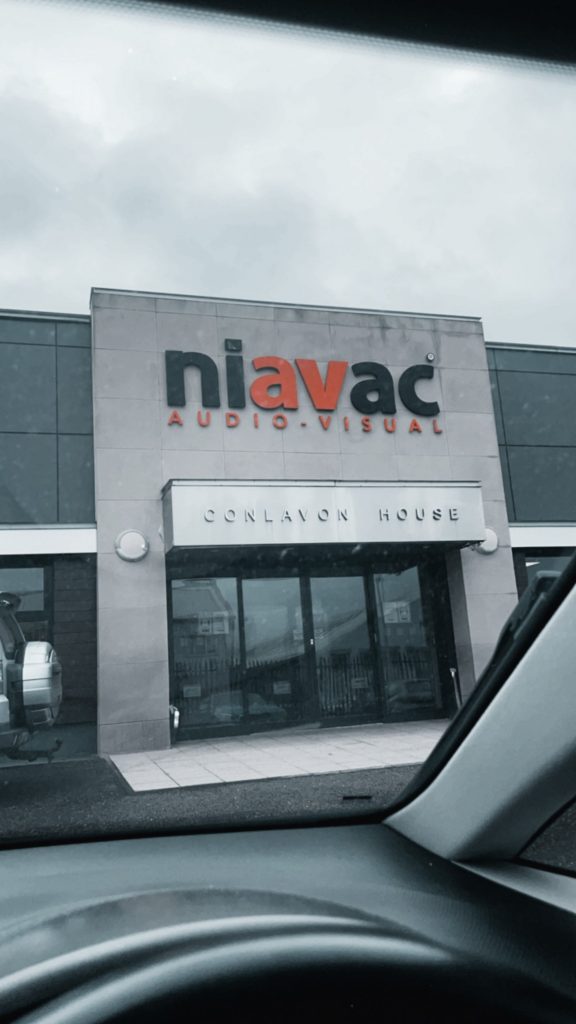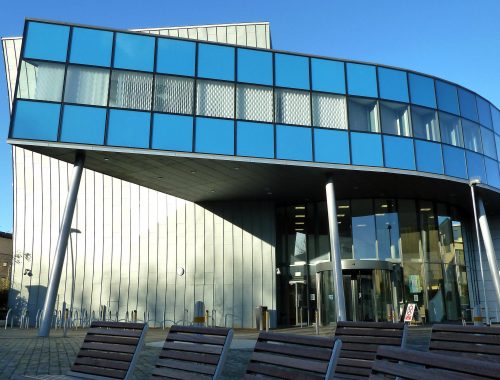AEL3001 – Work Based Learning Blog (40269524 – Conor Jones)
Blog Post One
As an avid lover of Music Production, including stage production, sound engineering, and lighting design I began to source a work placement that would satisfy these areas of the music industry. Upon my extensive research I found many production companies within Belfast that I could reach out to and try securing a work placement of at least 100 hours with. The first company I reached out to was NIAVAC. I have worked alongside NIAVAC in the past at many function events with the band I currently am stage technician for “The Just Adam Band”. Prior to the Covid-19 Pandemic I always wanted to carry out this line of work with a company like NIAVAC. Therefore, in being successful with securing this placement I was eager to start and begin further extending my knowledge of production.

After securing my placement by emailing Events Manager Steve Corr my initial placement enquiry, NIAVAC Secretary Donna McCauley and I planned out a start date. I started my ongoing placement 26/10/2021 and upon writing this blog post I have currently completed 38 hours of my placement. To complete my placement reflection thus far I am going to use the “Schon’s Model (2016)” as it fits the best with this line of work. Schon described “reflection-in-action” (in the moment of surprise and puzzlement) and “reflection-on-action” (a cognitive post-mortem after the fact) which was talked about within the Week 3 AEL3001 lecture upon reflective writing.
On my second week of placement 04/11/2021 I arrived onsite at Titanic Building, Belfast to assist the NIAVAC team with an event titled “Belfast’s International Homecoming”. This event required us to provide guest speakers with lapel microphones, handheld microphones, to provide adequate sound for said microphones and supporting PowerPoints and videos that guest speakers used to present and to provide Zoom Call capabilities for guest speakers around the globe that could not attend this event. This was my first proper day out onsite with the team and I was given the role of Front of House Sound Engineer. In effect I was controlling all the audio for the event equipped with a Yamaha CL1 Sound Console (Pictured below).

This was my first time using this console and therefore I had to adapt very quickly and learn how to use the onboard EQ and channel banks to ensure I had complete control over the entire event. This was very stressful at the start as I had to ensure if a guest speaker was talking that their microphone was at the correct level for all the audience to hear and that there were no feedback issues with any of the other microphones. Working alongside the NIAVAC team made this experience feel easy, if a guest speaker was going to show a promotional video, then I had to push up the corresponding faders at the correct moment. This was made easier with the team as Malcolm oversaw displaying the video at the correct moment, in effect I had a countdown to when I was supposed to push up the fader. Without this, it would have been a guessing game to when I should enable the sound for the video, having the team helped to eliminate any stress or anxiousness whilst operating a sound console I had never used before.
At this event a guest speakers lapel microphone began to cause feedback. Quickly thinking on my feet, I found the lapel microphone that was causing the feedback and asked another member of the team to quickly present the guest speaker with one of our Handheld microphones. Originally, I tried to find the frequency that was causing the feedback however it was not working so this method eliminated the microphone causing the feedback and the event ran smoothly once again. After the event the team were happy with how I reacted under pressure to this problem. Without my previous experience in the industry, I would have been flustered and confused to how I would deal with this problem. However, if I did not know how to combat this issue, I would have asked one of the crew members to assist in trying to rectify the problem. Another crew member Andy said that if I did not know which microphone it was causing the feedback, I could have also muted each microphone then brought each volume fader individually to source the microphone. This method would also work effectively in ensuring that I found the problem quickly.
From this event I have learned that being a front of house sound engineer at an important conference is a highly stressful task due to problems that can occur and how you can deal with them. From chapter one of “The Reflective Practitioner” by Schon (2) Schon states “that professional practice has at least as much to do with finding the problem as with solving the problem found, it is also true that problem setting is a recognised professional activity.” Reflecting upon this quote I have found that it is important to be able to recognise a problem straight away when providing a service for an event or other function in the production world. If I could not identify the problem or combat the stressful emotions I was feeling at the time, then I would not have been able to use my knowledge to resolve the problem, thus leading to feeling unprofessional.
Thus far into my work placement with NIAVAC I have thoroughly enjoyed learning how to combat issues that I have described above and also I have learned a lot of knowledge that I can now bring to my stage technician position with “The Just Adam Band”.
Bibliography
- – https://www.newsletter.co.uk/business/consumer/belfast-international-homecoming-goes-green-for-citys-response-to-cop26-3423291
- – Schön, D. A. (2016) The reflective practitioner : how professionals think in action. Routledge. Available at: https://search-ebscohost-com.queens.ezp1.qub.ac.uk/login.aspx?direct=true&db=cat02616a&AN=qub.b21376402&site=eds-live&scope=site (Accessed: 26 November 2021).
Putting Yourself Out There

Feast vs Famine
You May Also Like

Learning from experience- Am I on the right track?
28 November 2021
First Day Fears
24 November 2021
